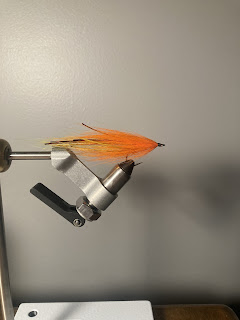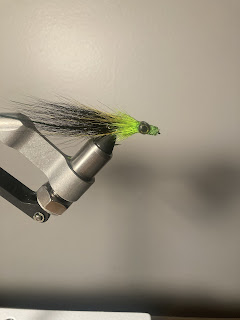Tying a deer hair streamer

This is a fly pattern that I recently came up with to target bass in the spring and summer. I tied it with a hidden cone head to give it weight which allows you to put a deer hair head on the fly and still have it sink. This fly was designed to be fished on a sinking line to prevent it from jigging in the water column but you can probably make it work on a floating line as well but this will give the fly a different action. I recommend fishing this fly when the water is slightly off color so that you can fish it fast and keep it in the middle of the water column. Materials needed: Thread(I used gsp for this fly but feel free to use any strong thread of your choice) Rabbit zonker strip Rubber legs Craft fur Deer hair Conehead Any size streamer hook Step 1: slide your conehead onto the hook. You’ll want this to be facing forward. Then start your thread behind it and bring it to the start of the hook bend Step 2: tie in your rabbit zonker strip. The length can be determined based on th




